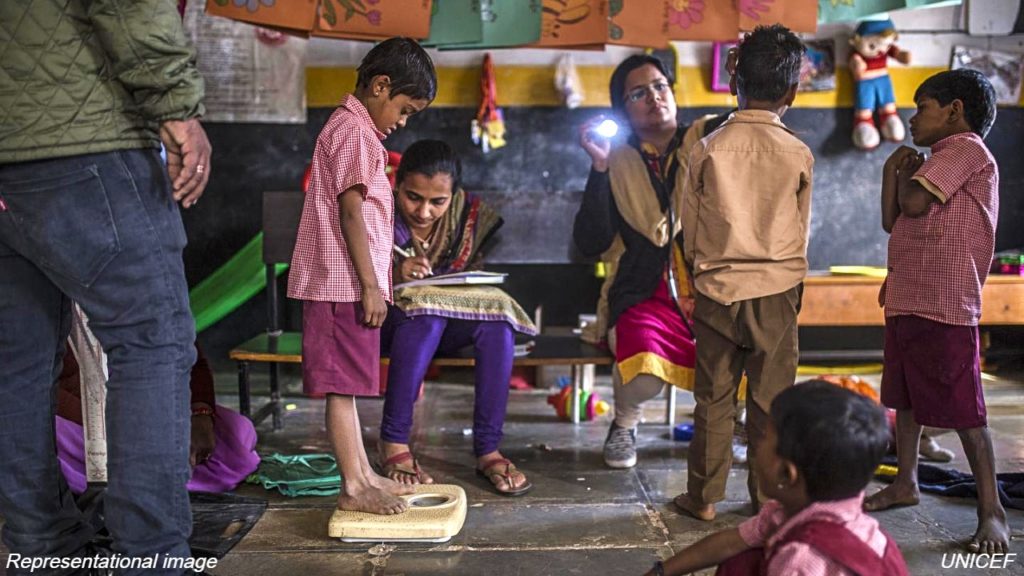NFHS-5 on child nutrition: Some progress over NFHS-4 but key deficiencies remain

The status of child nutrition in India, according to the National Family Health Survey-5, shows that though the country is making progress towards achieving the objectives of the UN Sustainable Development Goals (SDG) 2.2, the percentages of stunted, wasted, underweight and anaemic children, primarily, are proving to be stumbling blocks.
The fifth National Family Health Survey (NFHS-5), conducted from 2019 to 2021, and released on November 24, is the most comprehensive survey to date on the health and nutrition indicators of India’s men, women and children.
Since India has the most malnourished children in the world, it’s worth analysing what NFHS-5 has to say about India’s progress towards achieving UN Sustainable Development Goal (SDG) 2.2: “Ending all forms of malnutrition by 2030 for children under 5”.
Mortality rates: The infant and child mortality rates have improved since the previous round (NFHS-4, was released in 2015). The steepest fall has been recorded in the mortality rate of children under five years of age—from 49.7 to 41.9 deaths per 1,000 live births.
Vaccination rates: Vaccination rates have also improved since NFHS-4. The fraction of fully vaccinated children between the ages of 12 and 23 months has gone up from 62 to 76 per cent, along with the rate of partial vaccination.
Childhood diseases: ‘Childhood diseases’ presents a more mixed picture. While the prevalence of diarrhoea in the two weeks preceding the survey dipped slightly, the fraction of children receiving ORS and zinc for diarrhoea has gone up substantially. Children’s access to healthcare services has remained almost the same since the previous survey. The latter is an important finding, considering the COVID-19 pandemic.
Child-feeding practices: Children’s feeding practices have largely improved, with the largest improvement being in the percentage of children who were exclusively breastfed when under six months—from 55 per cent in NFHS-4 to 64 per cent in NFHS-5.
Nutritional Status: The percentage of children who are stunted (low height-for-age), wasted (low weight-for-height) and underweight (low weight-for-age) has gone down, but the numbers are still big—36 per cent, 19 per cent, 32 per cent. There is a slight increase in the percentage of severely wasted and overweight children but the very important thing to note is the 8 percentage points rise in children suffering from anaemia—it is 67 per cent, according to NFHS-5.
Taken together, while there has been some progress, India is not making as much progress as it should have towards SDG 2.2, primarily because the percentages of stunted, wasted, underweight and anaemic children are still far from desirable.







